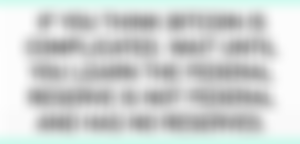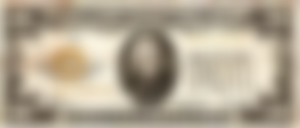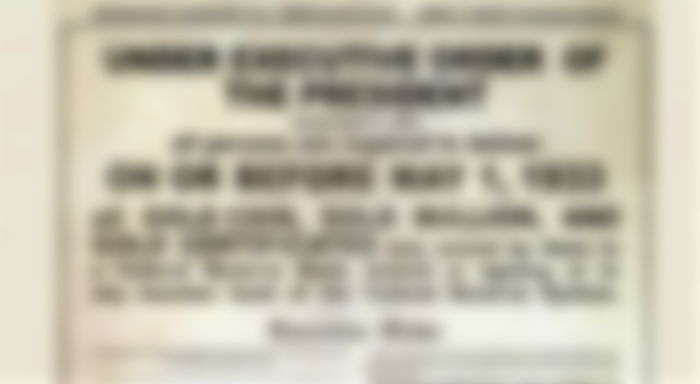228 years ago the U.S. dollar was created and ever since then, the national currency has been both powerful and controversial at the same time. Moreover since 1971, after being backed by precious metals for decades, American dollars have been backed by nothing and estimates say a quarter of the U.S. monetary supply was created in 2020 alone. The U.S. dollar conflict has led a number of analysts and economists to believe the U.S. monetary hegemony is on its last leg.
The Story of the US Dollar’s Devaluation
When you talk to someone about bitcoin, they often grow confused and say that it is too complicated for them to understand. However, when you ask them if they understand the meaning of fiat currency and how the U.S. dollar operates, they will likely be clueless about that matter as well. It’s likely the reason the very structure of how it operates continues to this day, without question from the citizenry, but has fallen victim to the mistakes of the past.

People should understand that the Federal Reserve is not a federal entity and it doesn’t have reserves either. The Federal Reserve, otherwise known as the Fed, is a private and independent organization from the U.S. government. However, since the creation of the central bank in 1913, the United States government has codified all of its operations.
The U.S. dollar was officially created in 1792 and was created with the likeness of the Spanish dollar. In fact, the Mexican peso and Spanish dollar were legal tender in the U.S. up until 1857. Years before the USD started, the country’s Continental Congress decided in 1785 that the dollars and coinage would be backed by precious metals.

At that time, the measurement of 375.64 grains of fine silver was a standard example until the U.S. decided to leverage the decimal ratio. U.S. dollars, particularly the paper form that followed coins, were later called “Federal Reserve Notes,” after the infamous Federal Reserve Act of 1913. On Christmas Eve of that year, President Woodrow Wilson helped invoke the Federal Reserve.

From the 1800s to the 1900s, the U.S. economy and its currency backed by precious metals grew. At the same time, other types of markets started to swell as well, like stock markets and the creation of central banks. Paper money was issued in 1862 without backing and was invoked to pay for Civil War expenses. In 1812 as well, the U.S. created unbacked paper notes to fund the War of 1812. Before the creation of the Federal Reserve, in 1878 the U.S. temporarily reinstated silver and gold coinage

Prior to the Fed being introduced, the Bank of England, Swedish Riksbank, and Banque de France were the first to initiate the consortium of modern central banking. In the late 1800s, stock market players during the turn of the century were accused of running ‘bucket shops.’ The bankers at the time gambled against their customers’ funds and were caught on a few occasions. In 1906, a U.S. Supreme Court decision created a standard definition of the bucket shop.
“An establishment, nominally for the transaction of a stock exchange business, or business of similar character, but really for the registration of bets, or wagers, usually for small amounts, on the rise or fall of the prices of stocks, grain, [and] oil,” the 1906 Supreme Court ruling notes.
Financial Panics and a Cabal of Bankers Bolstered the Creation of the Federal Reserve
Following the ruling, the U.S. economy was very fragile and in 1907, there was a banking panic called the “Knickerbocker Crisis.” The crisis saw a nationwide run on banks and trusts throughout the United States. Because of the “1907 Bankers Panic,” Americans did not trust the U.S. banking system.

The financial panics following the scare in 1907, plus Wall Street bankers who were members of the ‘Money Trust’ or the ‘House of Morgan’ pushed President Woodrow Wilson to enact the Federal Reserve Act. On December 23, 1913, Wilson, with the help of the U.S. Congress at the time, and the Money Trust banksters created the central bank in order to stabilize long-term interest rates, the country’s monetary supply, and employment.
From this point forward, U.S. dollars became Federal Reserve Notes (FRNs), but were still redeemable for precious metals (silver and gold) up until 1933. The Money Trust bankers, which consisted of members of the Morgan, Rothschild, Heinze, Rockefeller, and Warburg families, not only influenced markets, but also politicians like the 32nd president of the United States, Franklin Delano Roosevelt (FDR). A quick look at the St. Louis Fed documents and the Pujo hearings show how FDR was the House of Morgan’s puppet.

Financial panics in America again created an excuse for FDR to work with the bankers behind closed doors. As mentioned above, U.S. dollars were once redeemable for gold, but FDR’s bank holiday and the banning of gold ownership changed all that in 1933. FDR’s Executive Order 6102 signed on April 5, 1933 “forbid the hoarding of gold coin, [and] gold bullion.”
It seems that after removing the ability to redeem gold, the Federal Reserve, U.S. government, and other worldwide central bank members realized the fiat game without redemption may not last long. So 11 years later in 1944, the Bretton Woods pact was agreed upon, which was the first step in establishing the petro-dollar.
At that time, all of the World War II Allied nations participated and agreed that the cabal of central banks would maintain exchange rates based on the U.S. dollar. Instead of using the gold standard, a country would redeem its currency in USD rather than gold.
Vietnam War Expenditure Opens the US Dollar’s Can of Worms
As usual, war expenditure made it so the Federal Reserve, the managers of the U.S. currency continued to create a lot more dollars. Part of the Bretton Woods deal was the U.S. dollar was used because, at the time, the U.S. held three-quarters of the world’s gold. Meaning, the U.S. government, and Federal Reserve were trusted because the alleged gold could back the monetary supply.
During the Vietnam War, war expenditure was so massive other countries started taking notice of the U.S. printing massive amounts of USD. President Richard Nixon was then forced to act and in 1971, Nixon announced that the gold standard was completely removed from backing U.S. dollars.
But Nixon knew that the U.S. dollar had to have something else to keep the country’s monetary hegemony alive and well. While removing the U.S. currency from the gold standard in 1971, at the same time Nixon also made a deal with Saudi Arabia. The two countries decided that oil prices would be set and sold in USD.
Essentially that meant and still means for a number of countries today, anyone who wants to purchase oil must trade their currency for U.S. dollars. Following the deal with Saudi Arabia, the remaining OPEC countries followed suit and priced their oil in U.S. currency as well.

From this point forward the unaudited Federal Reserve and the U.S. military-industrial complex grew massive. Under President Reagan, Bush, Clinton, GW Bush, Obama, Trump, and even the current President Joe Biden, battles in the Middle East have continued relentlessly in order to keep the petro-dollar strong. For instance, this week the Biden administration authorized unconstitutional airstrikes over Syria without the approval of Congress.
American generations have been at war every year for decades on end since this time. Just before 2008, the descendants and friends of the same banking families from the House of Morgan wrecked the American economy by gambling the country’s mortgage sector. The unaudited Federal Reserve created massive amounts of USD at this time as well to save the economy and further devalued the unbacked FRNs.
Almost a Fifth of America’s Monetary Supply Was Created in 2020
After Covid-19 it has been much worse, as the coronavirus has been leveraged as an excuse to create unlimited amounts of U.S. Dollars. In 2020 alone, estimates show between 23.6% to 30% of all the USD ever created was issued in less than 12 months.

For decades on end, the U.S. government has experimented with creating massive amounts of unbacked money and it’s usually done to fund wars like the War of 1812, the Civil War, Vietnam War, and literally all the rest of the battles. Covid-19 has allowed the Federal Reserve to create a whole lot more than all the war expenses in the U.S. combined.
For all these reasons, sound money advocates, precious metals supporters, and a great deal of cryptocurrency supporters want alternatives to modern central banking and fiat. Bitcoin’s mathematical, calculated, and scarce supply is refreshing to people in a world filled with fiat manipulation. Bitcoin and a number of cryptocurrencies are nothing like the U.S. dollar, and it’s probably the reason why wealth managers in 2021 are shorting USD and long bitcoin.
Anyone can easily see that the U.S. dollar’s value has deteriorated greatly over the course of its history. It’s fairly understood among economists that the U.S. currency is not sustainable in this fashion for very much longer, and many other fiat currencies are in the same boat.
Bitcoin is the liferaft for many individuals and organizations in order to escape the devastation or get caught in the wake of the U.S. currency’s collapse.







